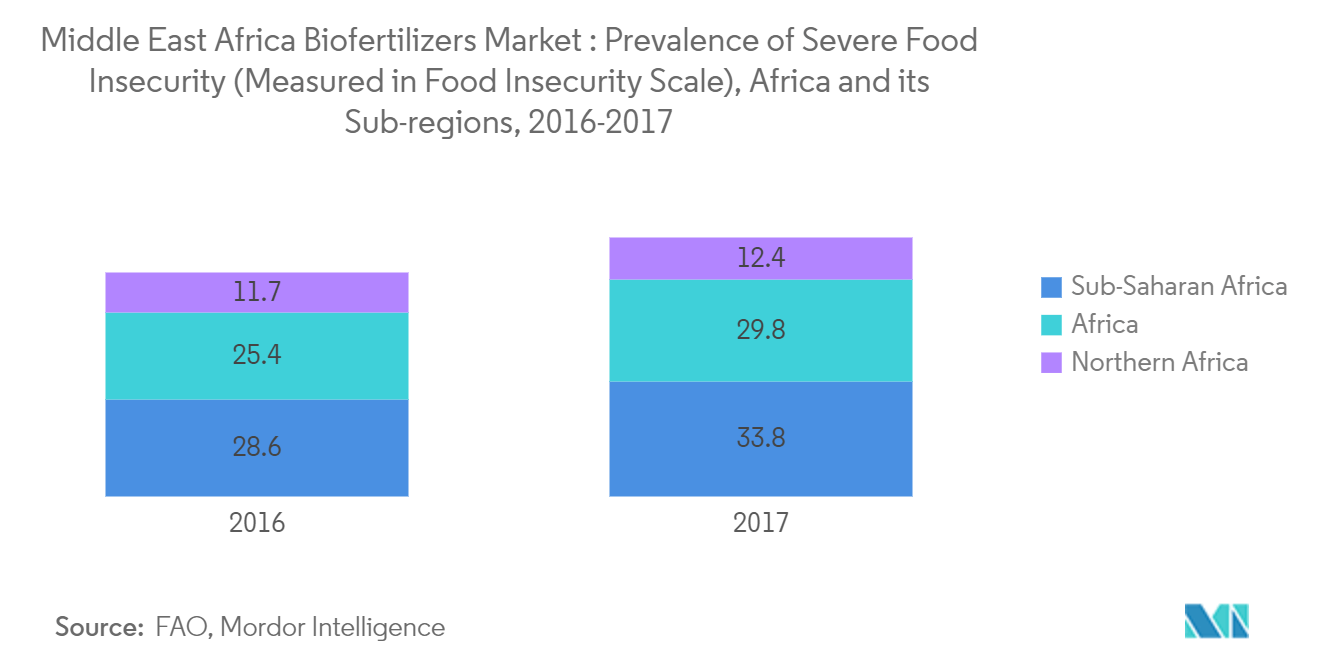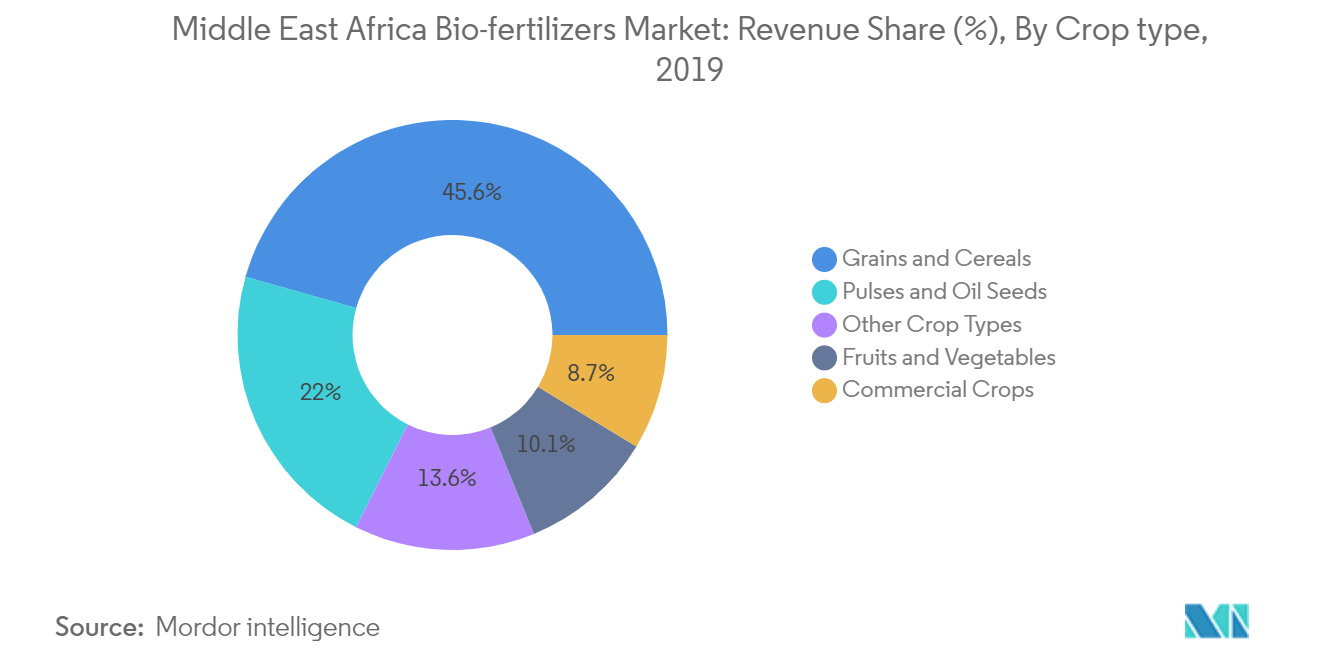Market Trends of Middle East & Africa Biofertilizers Industry
Increased Food Demand and Need for Sustainable Agricultural Development
Africa has the highest population with the largest arable land. For instance, the Sub-Sahara Africa region has 13% of the world population and has approximately 20% of global agricultural land. However, the region is facing severe food insecurity which is primarily attributed to inadequate food production. The lack of access to mechanization in farming and limited use of fertilizers due to less farmer buying power is driving the demand for alternative cost-effective fertilizers such as bio-fertilizers in the region. Smallholder farms in sub-Saharan Africa accounts for around 33 million, representing 80% of all farms in the region. Low fertility and inefficient management of soils have been major productivity challenges among African smallholder farmers. This can be somehow mitigated by the usage of inorganic fertilizers but their usage in soil nutrient management is unsustainable, causing soil degradation and environmental pollution. Currently, the increase in demand for sustainable agriculture is driving farmers to adopt a cost-effective integrated nutrient management system. This, in turn, may lead to demand for biofertilizers in the region.

Grains and Cereals Holds a Prominent Share
Africa is the origin of major cereal crops that include pearl, sorghum, millet, and rice Another major cereal wheat is widely cultivated in Sudan and Ethiopia. Maize has overtaken these traditional cereals over the last few years. For instance, 'Rhizofos maize' and 'Rhizopus Wheat and Barley' products from Rhizobacter are extensively used in South Africa increased maize yield by 15.3% and in the greenhouse by 18.4% compared to synthetic fertilizers, thus increasing yield per hectare will boost the biofertilizer market during the forecast period. In Africa, Tanzanian and Kenyan small farmers produce 69% and 63% of the food in the country, respectively. The economic condition of most sub-Saharan African countries cannot support the development of commercial agriculture and the use of expensive farm inputs such as inorganic fertilizers which damage the African soil. Therefore low-cost fertilizers such as biofertilizers will drive the market in the African region, as the region comprises small and marginal farmers in large share.


